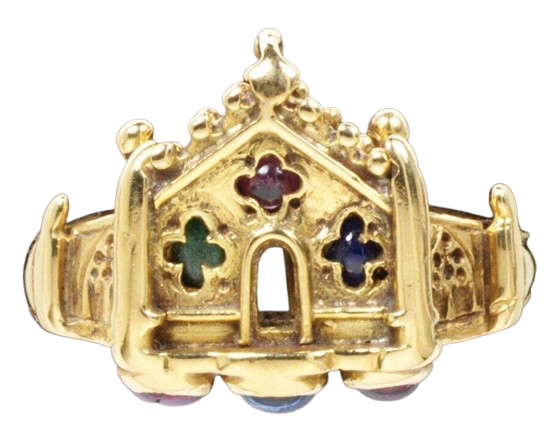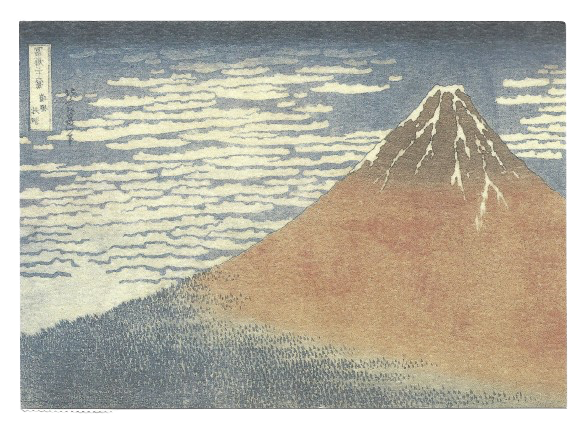november
‘And so, being young and dipt in folly
I fell in love with melancoly’
Edger Allan Poe, Romance
october
![]() Slow Horses, S1 E6
Slow Horses, S1 E6
Hassan That’s not a Norman castle
Curly Yes it fucking it is
H It’s a folly
C It’s a what?
H A folly, a fake
C Fake how, its still a castle
H It’s around 150 years old, built to look older
C Why would people build ruins, that makes no sense
H becasue they wanted to impress people, becasue they thought that it was romantic, because they thought it was English
C It is English
H It’s fake
Wimpole tower
‘The Gothic Tower, designed to look like a picturesque medieval ruin, is based on a sketch by the architect Sanderson Miller in 1749 for his patron, Lord Hardwicke, the owner of Wimpole. The design was later realised in an amended form under the supervision of the great landscape designer Lancelot ‘Capability’ Brown from 1768-72. In the following centuries, the ruin suffered extensive and gradual damage with many important characteristics being completely eroded while public access to the Tower and landscape was near enough impossible’
aspergillus section restricti
‘A new type of “extreme” mould is sweeping through Denmark’s museums, threatening some of the nation’s most important paintings and cultural objects, conservators have warned. Described as an “epidemic for Golden Age paintings”, the highly resistant mould covers objects in a white coating and has been detected in 12 of the country’s museums, including the National Museum of Denmark and Skagens Museum. Known as aspergillus section restricti, it belongs to a group of fungi that can survive in extreme environments such as the deep ocean or near volcanoes’
Mast year
‘A mast year is when trees and shrubs produce an unusual abundance of fruits, nuts, and seeds, known as “mast.” Instead of a scattering of acorns or the usual crop of berries, mast years bring thick carpets of nuts and seeds, heavy branches of fruit, and a feast for wildlife across our landscapes The strategy is known as predator satiation. In normal years, squirrels, mice, and other seed-eating animals consume most of the crop. But in a mast year, there’s so much food that the animals can’t possibly eat it all, so some seeds inevitably escape and grow into new saplings’
Screenshot notes
- Milan Kundera, The Book of Laughter and Forgetting
- Sein-zum-Tode, Heidegger
- ‘Pulling a Geographic’ AA term for trying to change by moving and reinventing
- Papier maché recipe: equal parts flour and warm water or pva and water, salt for preservation
- From a Tokyo side street, a gallery wins by refusing to compete, The New York Times
- Ex Libris, The New York Public Library (2017)
- Marmoreal- made of or compared to marble
- Traditional Celtic marriage vows
- Geology’s ‘Missing chapter’
- White Night (1959), Dracula (1992), Local Hero (1983), Starve Acre (2023)
- Bungaroosh
- Orlando (film) - Quinta de Regaleira, Sintra
- Reclaiming Artisitc Research, Lucy Cotter
- Curator Conversations, Tim Clark
attended
- Pick a Pipe, archive workshop, The Pipe Factory and Strangefield
- The Divine Comedy, GRCH
- Looking for Love in the Archives..., Ashanti Harris, re:reading public talk programme Glasgow University
- Afternoon Hearsay, Peng Zuqiang, The Common Guild
reading
- A Haunted House, Virginia Woolf
- The Paris Review 253
- The Waves, Virginia Woolf
- Me & Other writing, Marguerite Duras
read
- The Medium is the Message, Marshall McCluhan
- The pixel chix upstairs light & the longing of un-enterable spaces, Dazy Chains
- Moon Boots, Na Mee
watched
- The abandoned dance hall that couldn't stay dead, Kendra Gaylord
- Carol Rhodes: The Deluge, Painting Nerds
- A Portrait of Ga, Margaret Tait
- Slow Horses, S1-4
![]()
september
![]() House, Chicago
House, Chicago
‘In 1872, when the “leavings ” of the fire could be had for the asking or the trouble of picking them up, a man named Rettig1 conceived the idea of building a small cottage out of such material as a melted mixture of stone, iron and other metals. The queer structure was built at North Park avenue and Central street’
The Standard Guide to Chicago for the Year 1891
reading
- The Paris Review 253
- The Waves, Virginia Woolf
read
- National Gallery in London and Hugh Lane Gallery in Dublin reach 'collegiate' agreement over disputed art collection, The Art Newspaper
- In Defence of Anachronism: or, W.G. Sebald Interviews me, Lindsey Drager
- Lifting the Veil, Margaret Fosmoe
watched
- Fingersmith, Aisling Walsh, 2005
- The Moth, Catherine Cookson
- The mysterious life of Oregon’s Opal Whiteley, Oregon Experience from the Oregon Public Broadcasting archive
- Life on the last lighthouse, Tuesday Documentary, World of Work, BBC Archive
attended
- Freedom to Run, film screening
- Cat Stevens
-Rowena Wise
- City Nation Place UK conference
- Small Acts of Love, Citizens Theatre
- Has Art Pricing Gotten Out of Hand?, Artlogic conference
- What is Contemporary Art in the Age of AI?, Artlogic conference
- Beyond the Headlines: Resilience and Reinvention in the Gallery World, Artlogic conference
- Is Social Capital the Gallery’s Real Business Proposition?, Artlogic conference
- ‘Common Honesty’: William Morris related collections, Mitchell Library
- Galleries navigating Discretion in an Era of Disclosure, Artlogic conference
- I shall call you crocus! The creative life force of Jessie Marion King, Glasgow Resource Centre
- Richard Armitage and Denise Mina in conversation, Bloody Scotland
screenshot notes
- Wilson town
- Brian Dillon, Ambivalence
- Marina Caron, List Center new Assistant Curator
- Providence falls
- Dalkeith country park
- Amaranthus ‘one that does not wither’
- Jung, ‘Wounded healer’ concept
- E. M. Cioran, A Short History of Decay
- Mono-ha, Japanese and Korean ‘school of things’ movement
- Middleheim museum, Antwerp
- Lismore castle
- Sweet November, The Cider House Rules, Autumn in New York, Election, Mona Lisa Smile, Picnic at Hanging Rock, Amour (2012), Bel Ami (2012), The Lovers on the Bridge (1991), Under the Tuscan Sun, The Piano Teacher, Les Rendez-vous de Paris
- Roman bridge, Strathclyde Park
- Muckross Abbey, Killarney
- 1670 (show)
- ANTI- Contemporary Art Festival, Finland
- Senator Clark’s Folly
- Classiebawn Castle
- Hans Ulrich Obrist, Sharp Tongues, Loose Lips, Open Eyes, Ears to the Ground
![]()
august
![]()
‘We will need to trust each other, because today, it’s as if every safe place has melted into the sameness of water. We are searching for the boats we forgot to build’
Barry Lopez, Embrace Fearlessly the Burning World
Go mbéimid beó ar an am seo arís
May we be here this time next year
“You ate that first one and its flesh was sweet / Like thickened wine: summer’s blood was in it / Leaving stains upon the tongue and lust for / Picking.”
Seamus Heaney, Blackberry Picking, 1966
Robert Macfarlane: Is A River Alive?
with Cal Flyn, Edinburgh Book Festival
PE2131: Grant Scottish rivers, including the River Clyde, the legal right to personhood petition link
reading:
read:
- To the Lighthouse, Virginia Woolf
- The Age of Innocence, Edith Wharton
- Good Work, Paul Becker
- The Premonition, Banana Yoshimoto
- The Lighted Window, Peter Davidson
watched:
- Sorry, Baby, Eva Victor
- The Gilded Age, Season 3
- Ammonite, Francis Lee
- Flowers, Series 1-2 (rewatch), Will Sharpe
- Welcome to the Dollhouse, Todd Solondz
- A Quiet Passion, Terence Davies
- Age of Innocence, Martin Scorsese
misc attended: - The Front List: Asako Yuzuki, Edinburgh Book Festival
- Mike Nelson, Humpty Dumpty, Fruitmarket Gallery
- Simon Munnery, Edinburgh Fringe
- Robert Macfarlane: Is A River Alive?, talk chaired by Cal Flyn, Edinburgh Book Festival
- Public Service Broadcasting, Kelvingrove Bandstand
- Elbow, Kelvingrove Bandstand
‘And so, being young and dipt in folly
I fell in love with melancoly’
Edger Allan Poe, Romance
october

Hassan That’s not a Norman castle
Curly Yes it fucking it is
H It’s a folly
C It’s a what?
H A folly, a fake
C Fake how, its still a castle
H It’s around 150 years old, built to look older
C Why would people build ruins, that makes no sense
H becasue they wanted to impress people, becasue they thought that it was romantic, because they thought it was English
C It is English
H It’s fake
Wimpole tower
‘The Gothic Tower, designed to look like a picturesque medieval ruin, is based on a sketch by the architect Sanderson Miller in 1749 for his patron, Lord Hardwicke, the owner of Wimpole. The design was later realised in an amended form under the supervision of the great landscape designer Lancelot ‘Capability’ Brown from 1768-72. In the following centuries, the ruin suffered extensive and gradual damage with many important characteristics being completely eroded while public access to the Tower and landscape was near enough impossible’
aspergillus section restricti
‘A new type of “extreme” mould is sweeping through Denmark’s museums, threatening some of the nation’s most important paintings and cultural objects, conservators have warned. Described as an “epidemic for Golden Age paintings”, the highly resistant mould covers objects in a white coating and has been detected in 12 of the country’s museums, including the National Museum of Denmark and Skagens Museum. Known as aspergillus section restricti, it belongs to a group of fungi that can survive in extreme environments such as the deep ocean or near volcanoes’
Mast year
‘A mast year is when trees and shrubs produce an unusual abundance of fruits, nuts, and seeds, known as “mast.” Instead of a scattering of acorns or the usual crop of berries, mast years bring thick carpets of nuts and seeds, heavy branches of fruit, and a feast for wildlife across our landscapes The strategy is known as predator satiation. In normal years, squirrels, mice, and other seed-eating animals consume most of the crop. But in a mast year, there’s so much food that the animals can’t possibly eat it all, so some seeds inevitably escape and grow into new saplings’
Screenshot notes
- Milan Kundera, The Book of Laughter and Forgetting
- Sein-zum-Tode, Heidegger
- ‘Pulling a Geographic’ AA term for trying to change by moving and reinventing
- Papier maché recipe: equal parts flour and warm water or pva and water, salt for preservation
- From a Tokyo side street, a gallery wins by refusing to compete, The New York Times
- Ex Libris, The New York Public Library (2017)
- Marmoreal- made of or compared to marble
- Traditional Celtic marriage vows
- Geology’s ‘Missing chapter’
- White Night (1959), Dracula (1992), Local Hero (1983), Starve Acre (2023)
- Bungaroosh
- Orlando (film) - Quinta de Regaleira, Sintra
- Reclaiming Artisitc Research, Lucy Cotter
- Curator Conversations, Tim Clark
attended
- Pick a Pipe, archive workshop, The Pipe Factory and Strangefield
- The Divine Comedy, GRCH
- Looking for Love in the Archives..., Ashanti Harris, re:reading public talk programme Glasgow University
- Afternoon Hearsay, Peng Zuqiang, The Common Guild
reading
- A Haunted House, Virginia Woolf
- The Paris Review 253
- The Waves, Virginia Woolf
- Me & Other writing, Marguerite Duras
read
- The Medium is the Message, Marshall McCluhan
- The pixel chix upstairs light & the longing of un-enterable spaces, Dazy Chains
- Moon Boots, Na Mee
watched
- The abandoned dance hall that couldn't stay dead, Kendra Gaylord
- Carol Rhodes: The Deluge, Painting Nerds
- A Portrait of Ga, Margaret Tait
- Slow Horses, S1-4
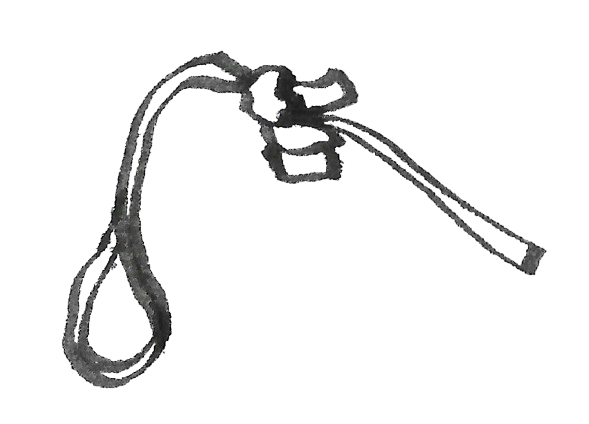
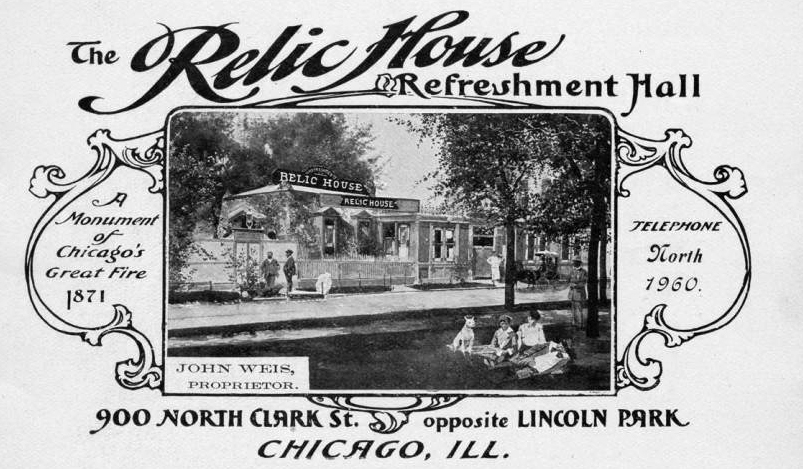
‘In 1872, when the “leavings ” of the fire could be had for the asking or the trouble of picking them up, a man named Rettig1 conceived the idea of building a small cottage out of such material as a melted mixture of stone, iron and other metals. The queer structure was built at North Park avenue and Central street’
The Standard Guide to Chicago for the Year 1891
reading
- The Paris Review 253
- The Waves, Virginia Woolf
read
- National Gallery in London and Hugh Lane Gallery in Dublin reach 'collegiate' agreement over disputed art collection, The Art Newspaper
- In Defence of Anachronism: or, W.G. Sebald Interviews me, Lindsey Drager
- Lifting the Veil, Margaret Fosmoe
watched
- Fingersmith, Aisling Walsh, 2005
- The Moth, Catherine Cookson
- The mysterious life of Oregon’s Opal Whiteley, Oregon Experience from the Oregon Public Broadcasting archive
- Life on the last lighthouse, Tuesday Documentary, World of Work, BBC Archive
attended
- Freedom to Run, film screening
- Cat Stevens
-Rowena Wise
- City Nation Place UK conference
- Small Acts of Love, Citizens Theatre
- Has Art Pricing Gotten Out of Hand?, Artlogic conference
- What is Contemporary Art in the Age of AI?, Artlogic conference
- Beyond the Headlines: Resilience and Reinvention in the Gallery World, Artlogic conference
- Is Social Capital the Gallery’s Real Business Proposition?, Artlogic conference
- ‘Common Honesty’: William Morris related collections, Mitchell Library
- Galleries navigating Discretion in an Era of Disclosure, Artlogic conference
- I shall call you crocus! The creative life force of Jessie Marion King, Glasgow Resource Centre
- Richard Armitage and Denise Mina in conversation, Bloody Scotland
screenshot notes
- Wilson town
- Brian Dillon, Ambivalence
- Marina Caron, List Center new Assistant Curator
- Providence falls
- Dalkeith country park
- Amaranthus ‘one that does not wither’
- Jung, ‘Wounded healer’ concept
- E. M. Cioran, A Short History of Decay
- Mono-ha, Japanese and Korean ‘school of things’ movement
- Middleheim museum, Antwerp
- Lismore castle
- Sweet November, The Cider House Rules, Autumn in New York, Election, Mona Lisa Smile, Picnic at Hanging Rock, Amour (2012), Bel Ami (2012), The Lovers on the Bridge (1991), Under the Tuscan Sun, The Piano Teacher, Les Rendez-vous de Paris
- Roman bridge, Strathclyde Park
- Muckross Abbey, Killarney
- 1670 (show)
- ANTI- Contemporary Art Festival, Finland
- Senator Clark’s Folly
- Classiebawn Castle
- Hans Ulrich Obrist, Sharp Tongues, Loose Lips, Open Eyes, Ears to the Ground
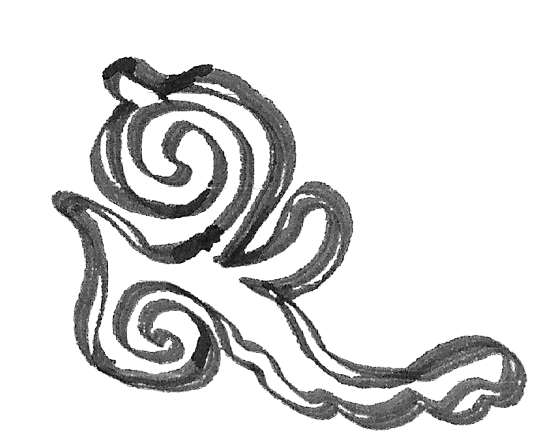
august

‘We will need to trust each other, because today, it’s as if every safe place has melted into the sameness of water. We are searching for the boats we forgot to build’
Barry Lopez, Embrace Fearlessly the Burning World
Go mbéimid beó ar an am seo arís
May we be here this time next year
“You ate that first one and its flesh was sweet / Like thickened wine: summer’s blood was in it / Leaving stains upon the tongue and lust for / Picking.”
Seamus Heaney, Blackberry Picking, 1966
Robert Macfarlane: Is A River Alive?
with Cal Flyn, Edinburgh Book Festival
PE2131: Grant Scottish rivers, including the River Clyde, the legal right to personhood petition link
reading:
- Snow Business, Philipa Snow
- Is Greed Good Again?, Emily Cox, Apollo Magazine
- The rocky history of Lismore Castle, Robert O’Byrne, Apollo Magazine
- Period problem: when should a house museum stop the clock? Edward Behrens, Apollo Magazine
- Death and Memory on the Coast: The Early Medieval Chapel and Cemetery of St Patrick, Heysham
- Is Greed Good Again?, Emily Cox, Apollo Magazine
- The rocky history of Lismore Castle, Robert O’Byrne, Apollo Magazine
- Period problem: when should a house museum stop the clock? Edward Behrens, Apollo Magazine
- Death and Memory on the Coast: The Early Medieval Chapel and Cemetery of St Patrick, Heysham
read:
- To the Lighthouse, Virginia Woolf
- The Age of Innocence, Edith Wharton
- Good Work, Paul Becker
- The Premonition, Banana Yoshimoto
- The Lighted Window, Peter Davidson
watched:
- Sorry, Baby, Eva Victor
- The Gilded Age, Season 3
- Ammonite, Francis Lee
- Flowers, Series 1-2 (rewatch), Will Sharpe
- Welcome to the Dollhouse, Todd Solondz
- A Quiet Passion, Terence Davies
- Age of Innocence, Martin Scorsese
misc attended: - The Front List: Asako Yuzuki, Edinburgh Book Festival
- Mike Nelson, Humpty Dumpty, Fruitmarket Gallery
- Simon Munnery, Edinburgh Fringe
- Robert Macfarlane: Is A River Alive?, talk chaired by Cal Flyn, Edinburgh Book Festival
- Public Service Broadcasting, Kelvingrove Bandstand
- Elbow, Kelvingrove Bandstand
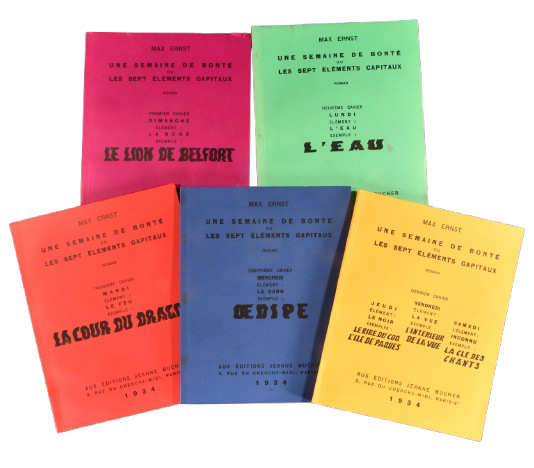
‘Une semaine de bonté is a surrealistic novel by Max Ernst, originally published in five volumes in 1934, showcasing his innovative collage technique. The work explores themes of eroticism and catastrophe through a series of collages that combine existing illustrations with new elements, reflecting the socio-political climate of the time. Each section of the novel corresponds to a day of the week, with unique elements and examples, culminating in a rich tapestry of visual and textual art’ Dimanche- la boue (mud)
Lundi - L’eau (water)
Mardi - Le feu (Fire)
Mercredi - Le sang (blood)
Jeudi - Le noir (blackness)
Vendredi - La vue (sight)
Samedi - Inconnu (unknown)
The Missing Post Office (2025), Clement Lefer



Corvus
‘The constellation Corvus is named for the crow or raven, a bird associated with Apollo. Apollo sends the Raven to fetch water (Hydra) in the god’s cup (Crater). The procrastinating Raven got back late because he waited for some figs to ripen before returning. Ravens, crows, and rooks, go ‘kraa kraa’. The call of the crow is a nasal caw compared to the deep, guttural croak of the raven, although both species have extensive and varied vocal repertoires. The cawing of the ravens or crows was heard as “Cras! Cras!” by Latin speakers, and was thought to mean “Tomorrow! Tomorrow!” We get the word procrastination, “postpone until the morrow”, from Latin cras’
The ship of Theseus
‘Also known as Theseus’ paradox, is a thought experiment that raises the question of whether an object that has had all of its components replaced remains fundamentally the same object. The paradox is most notably recorded by Plutarch in Life of Theseus from the late first century. Plutarch asked whether a ship that had been restored by replacing every single wooden part remained the same ship’
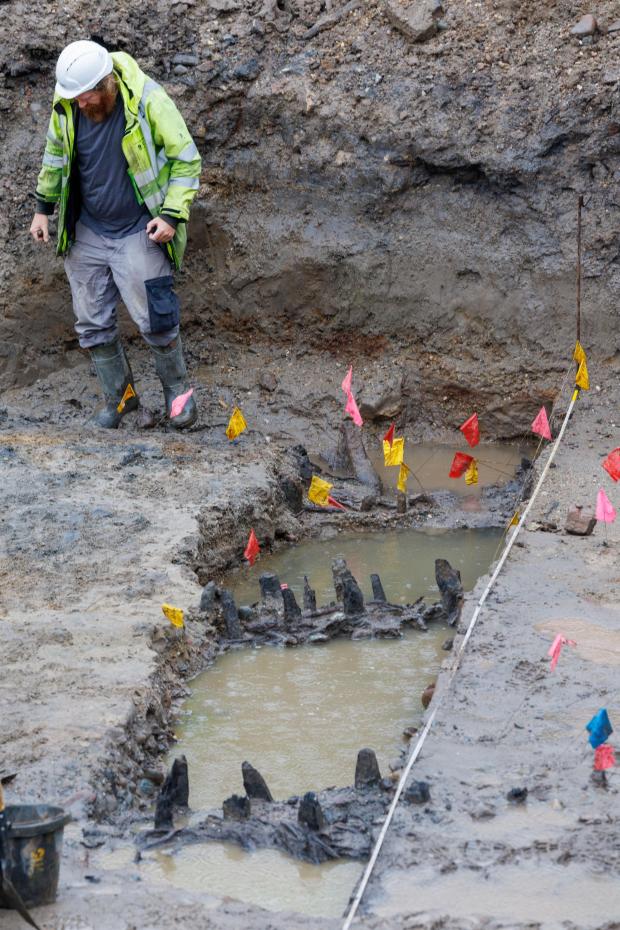
‘Archaeologists uncovered the remains of early suburbs four and a half meters under a building site in Spoutmouth, Gallowgate. Well-preserved wooden posts with woven fencing and medieval pottery were discovered by the GUARD Archaeology team, who were called in to assist after workers came across the objects’
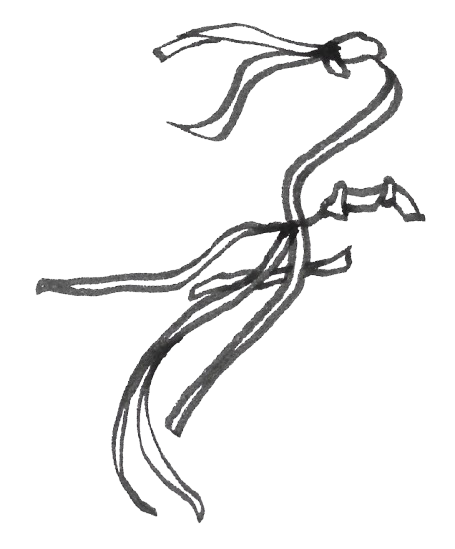
Buster Keaton’s house stunt, Steamboat Bill, Jr. 1928
AML/ KYC
‘In the UK and EU, there is a broad, consistent framework, but each regulator applies it differently,” Rena explained. “Interestingly, in the UK, if an artist sells directly to a collector, they are not subject to AML regulations. However, if they sell through a gallery, they are.” This illustrates the complexity of the regulations, as individual transactions may fall under different legal requirements depending on the intermediary involved.
In contrast, the U.S. has chosen to limit its AML regulations to antiquities, leaving the broader art market to operate according to "best practices" without a clear definition of what those practices should entail. Rena also noted that regions like Hong Kong, mainland China, and South Korea have yet to introduce formal regulations, posing potential risks for European and American galleries dealing with international clients’
Disclosure documents required for gallery to client sales above the £8,000 sale value threshold:
AML Anti-money laundering
KYC Know Your Client
The battle of Glasgow
‘On 9 March 1914, women battled police in Glasgow during Emmeline Pankhurst’s speaking tour of Scotland. The famous suffragette had been temporarily released from prison to nullify her hunger strike, but now the police sought to rearrest her so she would serve the remainder of her sentence. What they didn’t expect was an organised bodyguard. Pankhurst’s protectors had barbed wire concealed in flower bouquets and clubs concealed in dresses. Some had undertaken martial arts training, and they carried at least one gun. The Glasgow Herald reported that “Unparalleled scenes of disorder took place. The police stormed the platform and for several minutes a fierce struggle took place between them and Mrs Pankhurst’s supporters, several persons being injured. Flower pots and chairs were thrown at the constables, who were obliged to draw their batons. In the course of the mêlée the excitement was intensified by a woman firing several blank rounds from a revolver.”’
‘Across what distance in time do the elective affinities and correspondences connect? How is it that one perceives oneself in another human being, or, if not oneself, then one’s own precursor?’
W G Sebald, The Rings of Saturn, 1995
Katie Paterson, Afterlife, 2025
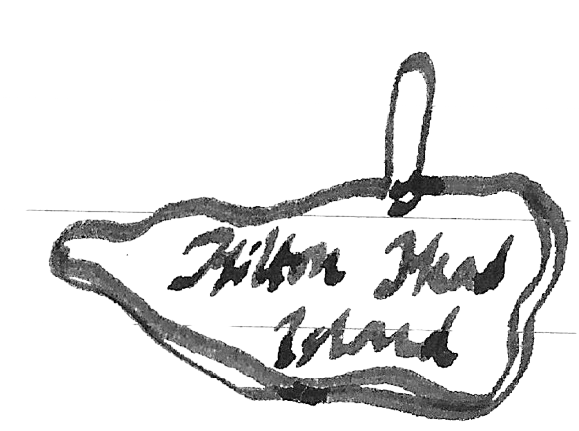
‘He was in a grey-green somnolence which embraced them all’
Virginia Woolf, To the Lighthouse, 1927
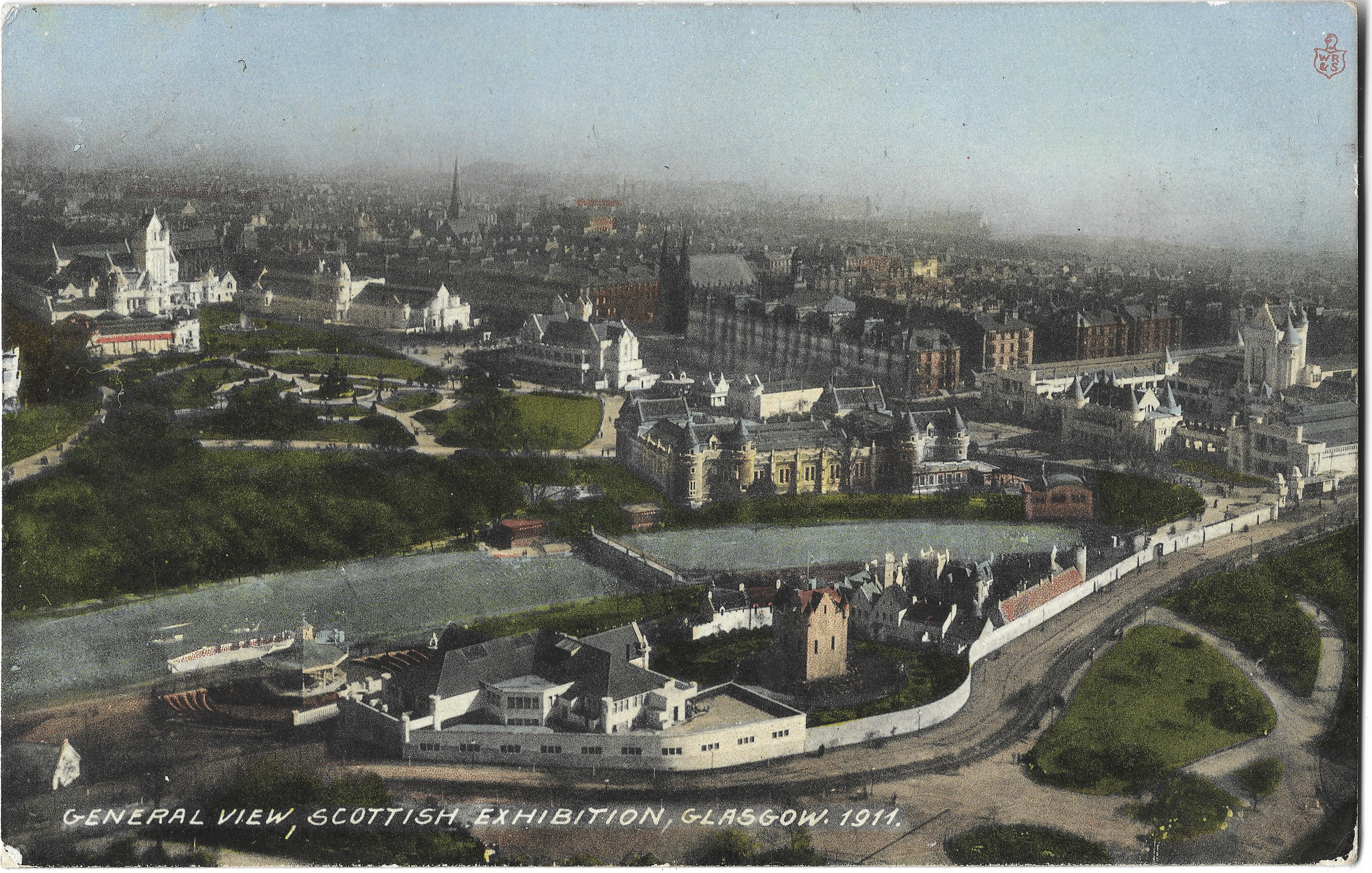
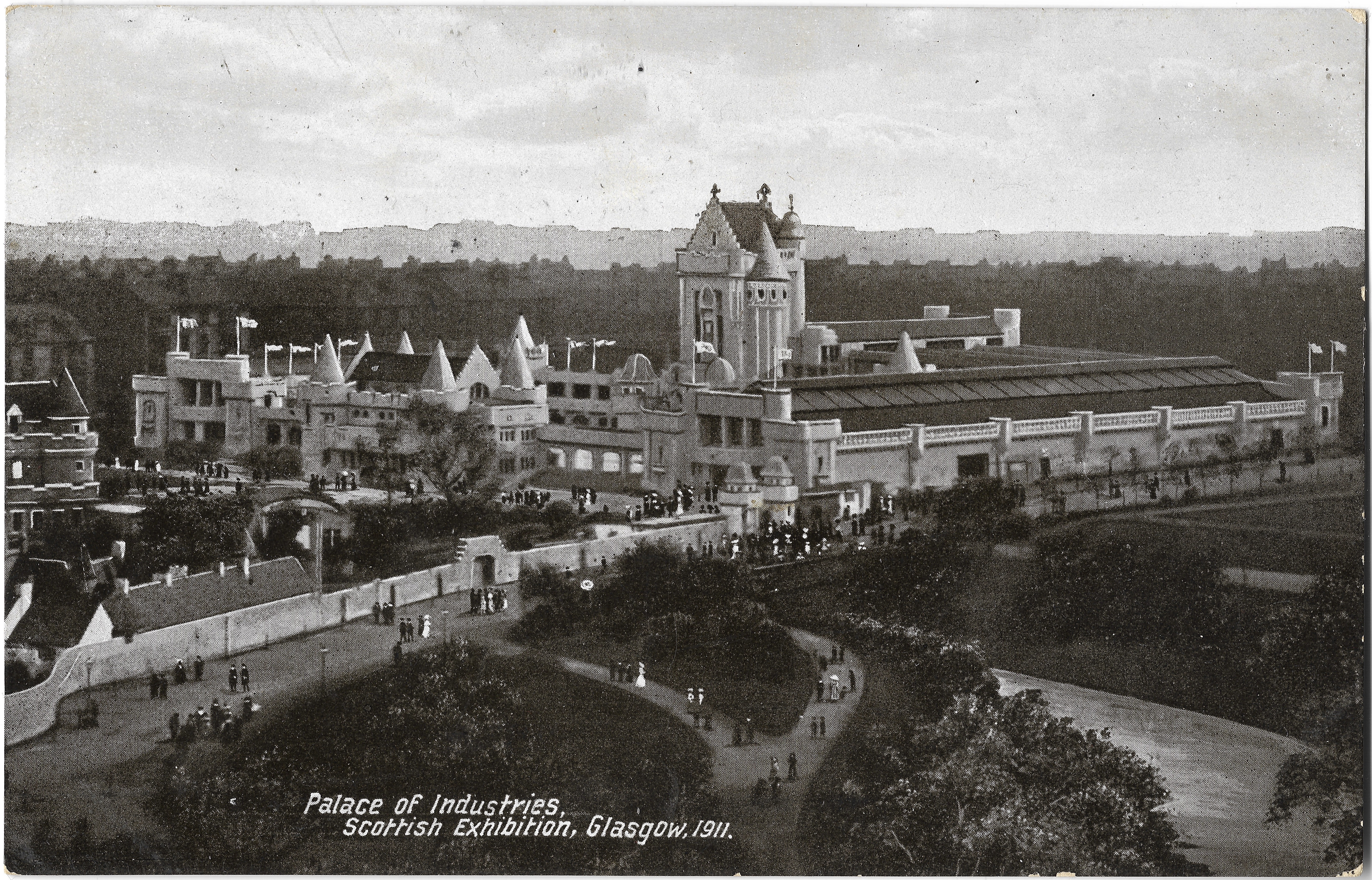
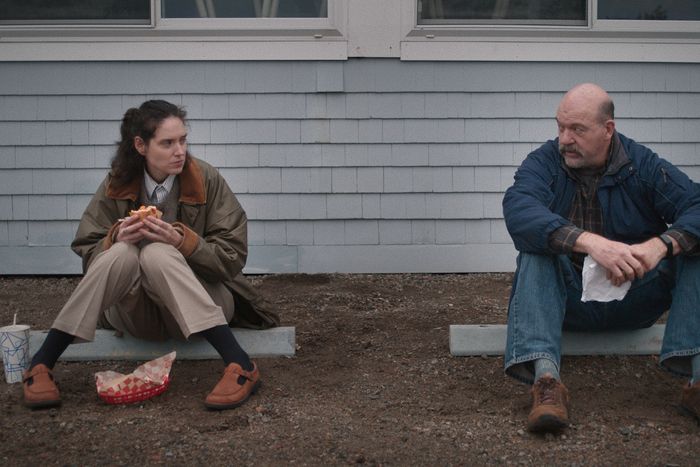
Sorry, Baby, 2025


Edgar Degas, Jockey Blessé, 1896-1898
Brian Dillon, Feeling Feelings, Objects in This Mirror

july
Virtus semper virdis

Eyam
In August of 1665, the plague reached the Peak District village of Eyam via contaminated cloth received from London by the village tailor. The new vicar William Mompesson persuaded the inhabitants of Eyam to self-impose a quarentine, lasting for 14 months. A cordon sanitaire of large flat stones was created beyond the borders of the village. Meat and grain brought from neighbouring villages was left by the stones and, in exchange, the villagers left coins in bowls of vinegar in hollows of the stones.
Lovers Emmot Syddall and Rowland Torre met at the stream every week to see each other and shout across the water, as Rowland lived on the other side of the cordon. According to the story, one day Emmott no longer showed, she had passed at the age of 22
Embodied carbon / Operational carbon
Embodied carbon- the manufacture, transport and installation of construction materials
Operational carbon- the building’s energy consumption
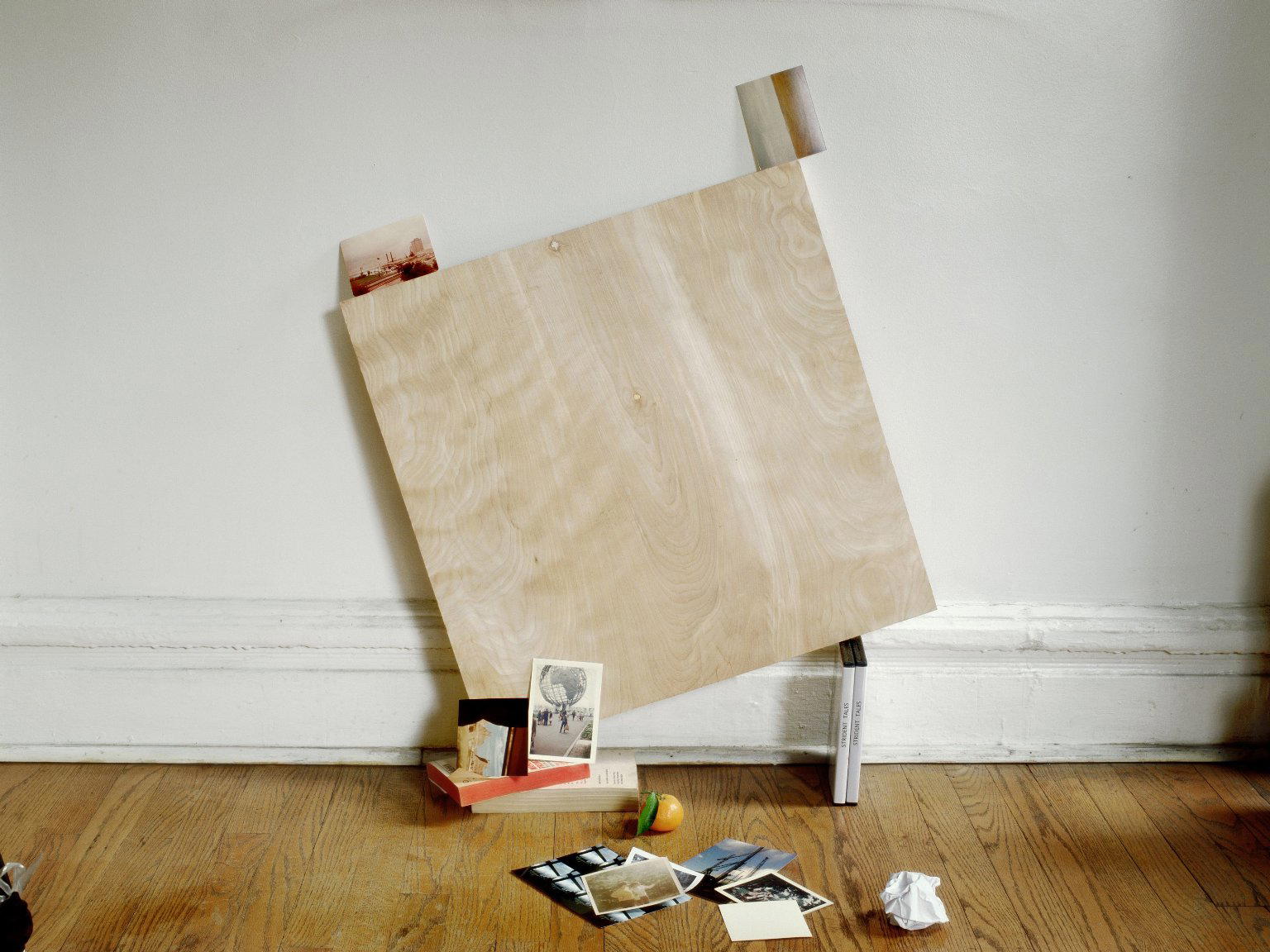
Leslie Hewitt, Untitled (Constant emotion), 2010

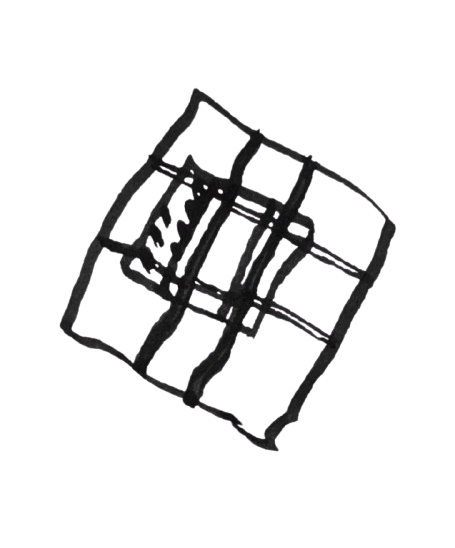
june
‘Everything that is essential to art practice, however tortuous the journey, is predicated on acts of disclosure; everything essential to curating turns on showing, ostension, acts of exhibiting’
Terry Smith, Curating the Complex & the Open Strike
‘Community is an act of mutual self- disclosure’
Richard Sennet,The Fall of Public Man
reading:
- Not Going It Alone: Collective Curatorial Curating, edited by Paul O’Neill
- Curating Research edited by Paul O’Neil and Mick Wilson
- Good Work, Paul Becker
- Snow Business, Philipa Snow
- In search of a new ethics of care to the audience in exhibition-making practice, Jasper Delbecke
-The Artist as Ethnographer?, Hal Foster
- Locating the Producers: An End to the Beginning, the Beginning of the End, Paul O’Neill and Claire Doherty
-“The People’s Choice”, General Idea, Thomas Lawson
-The Collective Creativity of Workers: From Unconscious Sleeping Giant to Builder of Barricades Part II, Bruce Lerro
- Conversation Pieces: The Role of Dialogue in Socially-Engaged Art, Grant Kester
- Dialogical Aesthetics, Grant Kester
- The New Situationists, Claire Doherty
- Connective Aesthetics, Suzi Gablik
-On Smuggling as Strategy and the Possibility of Decolonizing the Curatorial, Juana Awad
-”The Curatorial”, Maria Lind
- Curatorial Criticality – On The Role Of Freelance Curators In The Field Of Contemporary Art, Beatrice Von Bismarck
- From Para to Post: The Rise and Fall of Curatorial Reason, Simon Sheikh
- “We were learning by doing”, An Interview with Charles Esche
- The Misunderstood Art of Marie Laurencin, Hannah Stamler
- Muse or revolutionary painter: Who was Suzanne Valadon?, Louise Darblay
- Looking Away: Participations in Visual Culture, Irit Rogoff
read:
- The New Face of Provenance Research, Kelly Davis
- Day-Tripping: Urban Excursions and the Architecture of International Exhibitions, Dr Rosie Spooner
-The Collaborative Turn, Maria Lind
- “Not the Art History I used to know”, Richard Brilliant
watched:
- I bought 140+ floorplans to understand Blue Prince, Kendra Gaylord
- David Byrd: Thats Me In The Corner, Painting Nerds - Living Treasures of Japan (1981)
attended:
- SAVE at 50! Material Legacies: Heritage, Reuse and the Climate Crisis, The Briggait
-The Reason of Towns, Irish Architecture Foundation (IAF)
-SAVE at 50! Buildings at Risk launch 2025
-William Morris Gallery
- National Gallery
- Old Masters to Modern Day sale, Christie’s
- Connecting Thin Black Lines 1985 – 2025, ICA
- V&A East Storehouse
- Empty Alcove / Rotting Figure, Dan Guthrie, Chisenhale gallery
- DEVOCORPOS, Katie Shannon, Neven gallery
- Something where there should be nothing, Soft Opening
- NO 1 @ MEE..., Fatzoo, The Sunday Painter
- In-conversation between artist Megan Rooney and writer Emily LaBarge, Thaddeus Ropac
- Suleman Aqeel Khilji, Royal Academy of the Arts
- Art & the Book, The Warburg Institute
- Seven New Paintings, Andrew North, South Parade
- WHERE THE WILD THINGS ARE, Okiki Akinfe
- GSA Undergraduate degree show
- Sensing City, Mapping Space, curated by Abie Soroño

Heidegger
Die Erde / die Welt : the earth / the world
Das seiendes / das sien des Seienden : existing reality / the being of existing reality
‘I have been conflicted and nearly torn apart by opposite desires: between loving and being loved, or by being alone. I have had to be ruthless about keeping my space to myself, but the barriers I have put up between myself and the outside world have never been as secure as yours’
Celia Paul, Letters to Gwen John
Bonfire of the Vanities
February 7th 1497
"sinful objects were collected for months leading up to the ritual, and on the day of the bonfire itself, Savonarola’s followers adorned themselves with white gowns, garlands and red crosses and went door-to-door collecting objects for burning. An enormous pyre was erected in the Piazza del Signoria and it was surmounted by an image of Satan. Representatives of the different Florentine districts symbolically lit the pyre, obliterating the objects of vanity." Historians have named it the Bonfire of the Vanities—"vanities" being things that distracted Florentines from their religious duties in the eyes of their current ad-hoc leader, Savonarola. What’s important about the bonfire isn’t that it happened, but that people actually handed over things to be burned in the midst of a fairly brief period where Savonarola was the city’s ideological leader and told everyone to expect the coming of the end of the world.’

may
reading:
- Not Going It Alone: Collective Curatorial Curating, edited by Paul O’Neill
- Day-Tripping: Urban Excursions and the Architecture of International Exhibitions, Dr Rosie Spooner
- Research Acts in Art Practice, Graeme Sullivan
- Injecting the Essayistic into the Curatorial, Jasper Delbecke
- Integrated Art Documentation: the Guggenheim Perspective, Tasha Seren, Deirdre Donohue and Lynn Ann Underwood
- In a ‘House if Memory’: Discovering the Provenance of Place, Jeanette Allis Bastian
- The Collaborative Turn, Maria Lind
- “Not the Art History I used to know”, Richard Brilliant
read:
- Against Periodization; or, On Institutional Time, Eric Hayot
- Rethinking Provenance Research, Christian Fuhrmeister and Meike Hopp
- Play It as It Lays, Joan Didion
- The Subject of Botticelli’s ‘Derelitta’, Edgar Wind
- Heidegger and the Origin of the Work of Art: An Explication, Robert B. Stulberg
- Stories from Black Scottish History, Scotland with Hannah 🔗
- Refiguring the Archive, collection of essays
- ‘I just don't like eggs!’: Andrea Fraser unpacks the art market, Wallpaper*
- The Field of Contemporary Art: A Diagram, Andrea Fraser
- Men Reading Women Reading: Interpreting Images of woman readers, James Conlon
- Translating the Past: History & its Images in Late-Medieval Scotland 🔗
- Ingmar Bergman, The Maestro of Angst, Leonard Quart
- ‘A Year of Rest and Relaxation’, Embraces Uneasy Intimacies, Simone Molinari 🔗
watched:
- Artists Archives Series: Alan Dimmick and Claire Barclay 🔗
- The Field of Contemporary Art. Andrea Fraser Lecture | The Artist: Professional (A–Z) 2025 🔗
- Bergman Island, Mia Hansen-Løve
- Me You and Everyone We Know, Miranda July - Stories We Tell, Sarah Polley
- Are We Entering a New Gothic Era? Kate Alexandra 🔗
- King Henry VIII's Lost Flagship, Raising the Mary Rose: The Lost Tapes, Channel 4 🔗
-The 73 cent teleportation hack, Kendra Gaylord 🔗
misc attended:
- GSA MFA Graduate show, The Glue Factory
- Town Without Pity, Paige Silverman, Glasgow Project Room, curated by Chaz Scott
- Myths of the New Future, The Common Guild
- Pilgrim Fields, Solange Pessoa, Tramway opening
- Archaeological Research in Progress 2025 conference
- Storytelling Through Banners and Stained Glass: 850 Years of Our City, Glasgow Trades Union Council, 1st May
- Digging in Another Time: Derek Jarman's Modern Nature, The Hunterian Gallery
Werner Herzog, ‘Ecstatic Truth’
Herzog coined the term ‘ecstatic truth’ in the 1990s. He believes that by transcending mere facts – or what he calls ‘the accountant’s reality’ – the ‘ecstatic truth’ can capture the human experience more faithfully, enabling his viewers to have a deeper emotional and philosophical connection to his films‘How important, really, is the Factual? Of course, we can’t disregard the factual; it has normative power. But it can never give us the kind of illumination, the ecstatic flash, from which Truth emerges’

‘The Cuerdale Hoard, an enormous Viking silver treasure of some 8000 silver coins and pieces of bullion, was discovered in Lancashire, in 1840.
It is one of several Viking hoards unearthed in England but is the largest to date. It is larger than any hoard found in Scandinavia and is the largest Viking silver hoard ever found outside Russia.
The hoard was found by workmen employed in repairing the embankment on the south side of the River Ribble at Cuerdale, near Preston, where it had been buried in a lead chest’
somewhere i have never travelled,gladly beyond
any experience,your eyes have their silence:
in your most frail gesture are things which enclose me,
or which i cannot touch because they are too near
your slightest look easily will unclose me
though i have closed myself as fingers,
you open always petal by petal myself as Spring opens
(touching skilfully,mysteriously)her first rose
or if your wish be to close me,i and
my life will shut very beautifully,suddenly,
as when the heart of this flower imagines
the snow carefully everywhere descending;
nothing which we are to perceive in this world equals
the power of your intense fragility:whose texture
compels me with the colour of its countries,
rendering death and forever with each breathing
(i do not know what it is about you that closes
and opens;only something in me understands
the voice of your eyes is deeper than all roses)
nobody,not even the rain,has such small hands
somewhere i have never travelled,gladly beyond, E.E. Cummings
‘When you’re in the middle of a story, it isn’t a story at all, but only a confusion, a dark roaring, a blindness, a wreckage of shattered glass and splintered wood, like a house in a whirlwind, or else a boat crushed by icebergs or swept over the rapids, and all aboard are powerless to stop it.
It’s only afterwards that it becomes anything like a story at all. When you’re telling it to yourself or to someone else.’
Michael Dolley, Stories We Tell (2012)
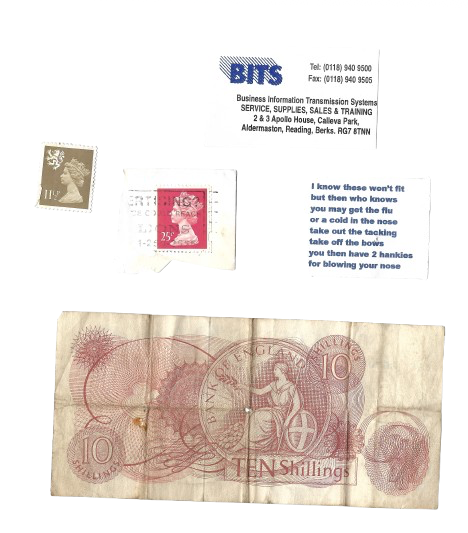
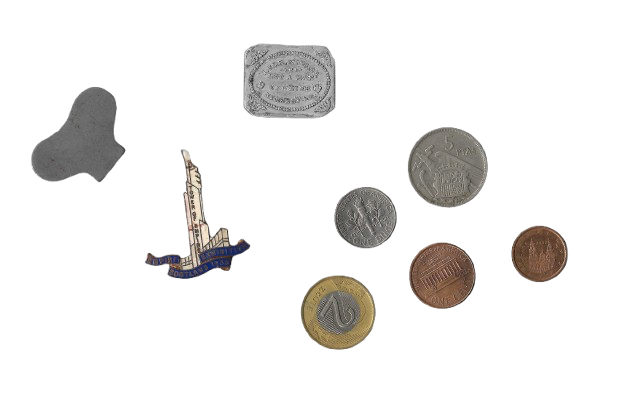
Objects found in Abbess D208 desk, bought at Hamilton Auction House

april
sotto voce
'To delight in the aspects of sentient ruin might appear a heartless pastime, and the pleasure, I confess, shows the note of perversity. The sombre and the hard are as common an influence from southern things as the soft and the bright, I think; sadness rarely fails to assault a northern observer when he misses what he takes for comfort. Beauty is no compensation for the loss, only making it more poignant'
Henry James, Italian Hours
read:
- Modern Gothic, Flâneur, Stock-image-text-post, Lydia Eliza Trail 🔗
-What does falsehood give to knowledge within the framework of logic and ecstacy truth? A study of veracity within Myths, Fables and Tales, Ned Pooler
- Seen, Known, Danced and Spoken: Heinrich von Kleist and the Limits of Being Human, Jessica D. Brier
- ‘Translating’ the Lost Scottish Renaissance, R. D. S. Jack
- Eric Rohmer’s Opressive Summers, John Fawell
- Ruins in Ireland, Ireland in Ruins: Symbols and Semiotics in Visual Art, Yvonne Scott
- W.B. Yeats and the Creative Process: The Example of ‘Her Triumph’, Phillip L. Marcus
- Time out of Joint; Looking at Caravaggio in the 21st century 🔗
- Melting moguls: life-size Rupert and Lachlan Murdoch candles burn in Melbourne installation 🔗
- Tamara De Lempicka: a radical, bohemian, bisexual artist loved by Madonna, Emily Dinsdale
- The Disappearance of Westwood House 🔗
- Butter, Asako Yuzuki
reading:
- Not Going It Alone: Collective Curatorial Curating, edited by Paul O’Neill
watched:
- Los Guantos Mágicos, Martín Rejtman
- Book Talk: Dean Sameshima and Andy Campbell on ‘being alone’ 🔗
-The Souvenir: Part II, Joanna Hogg
- The Souvenir, Joanna Hogg
- Ed Hall on the history and craft of union banners, Southbank Centre 🔗
- Mr Burton, Marc Evans
- Small Axe, Steve McQueen
- John Berger on tenderness, the dead, freedom, bikes (with Michael Silverblatt) 🔗
- Sutton Hoo Ship: Rebuilding a Legend, Part 1 with Tony Robinson, 2024 🔗
- In the Loop, Armando Iannucci
- La Collectionneuse, Eric Rohmer
- La Chimera, Alice Rohrwacher
- Jeremy Deller: Middle Class Hero 🔗
- Matt and Mara, Kazik Radwanski
- Letters to Max, Eric Baudelaire
- Silvia Prieto, Martin Rejtman
- Grand Tour, Miguel Gomes
Marionette theory
‘Writing at the dawn of the nineteenth century, von Kleist’s musings remind us that questions of human intent and action, the ability to know, the role of the social in understanding the world, and the specter of automatism; these have painted the modern age with an ambiguous brush, its hues never fully perceptible but vivid.
Arguably, the conditions of uncertainty around knowing ourselves and our world aren't confined to modernity. But von Kleist’s attempt—in the essay “On the Marionette Theater,” written a year before the writer’s untimely death in 1811—to grapple with the inherent contradiction between self-awareness and total knowledge shows a heightened anxiety around the notion of selfhood in the modern age.
Von Kleist used the marionette to work through what he saw as a problem inherent to Enlightenment thinking, which privileged rational individualism as a framework for understanding the world. The role of a moveable but insensate object in his text seems no accident in an age that saw the constant invention and proliferation of artificial but kinetic objects that acted as extensions of the human body’
🔗
‘Our world is filled with machines and ideas that threaten to separate our consciousness from our corporeal reality and its relations to our surrounding world. The challenge today seems not to identify that separation, as it was for von Kleist, but the ability to put ourselves back together again. Is it possible to reconstruct the self as whole from fragments of our memories, experiences and mediated realities, even while accepting total knowledge as a bygone myth? Perhaps it is, in the expanded social field-the realm in which von Kleist saw the possibility of thought through speech that we might find ourselves reflected back as cohesive and knowable. We might ask each other to open our eyes, to see and be seen as more unbelievably whole than plausibly fragmentary, whether as proximal friends or faraway audience’
Jessica D. Brier, Seen, Known, Danced and Spoken: Heinrich von Kleist and the Limits of Being Human
Medullary rays
(also referred to as pith rays, oak figure or tiger stripes) are thin horizontal rays that extend radially from the core of the tree toward the bark
‘Our world is filled with machines and ideas that threaten to separate our consciousness from our corporeal reality and its relations to our surrounding world. The challenge today seems not to identify that separation, as it was for von Kleist, but the ability to put ourselves back together again. Is it possible to reconstruct the self as whole from fragments of our memories, experiences and mediated realities, even while accepting total knowledge as a bygone myth? Perhaps it is, in the expanded social field-the realm in which von Kleist saw the possibility of thought through speech that we might find ourselves reflected back as cohesive and knowable. We might ask each other to open our eyes, to see and be seen as more unbelievably whole than plausibly fragmentary, whether as proximal friends or faraway audience’
Jessica D. Brier, Seen, Known, Danced and Spoken: Heinrich von Kleist and the Limits of Being Human
Medullary rays
(also referred to as pith rays, oak figure or tiger stripes) are thin horizontal rays that extend radially from the core of the tree toward the bark
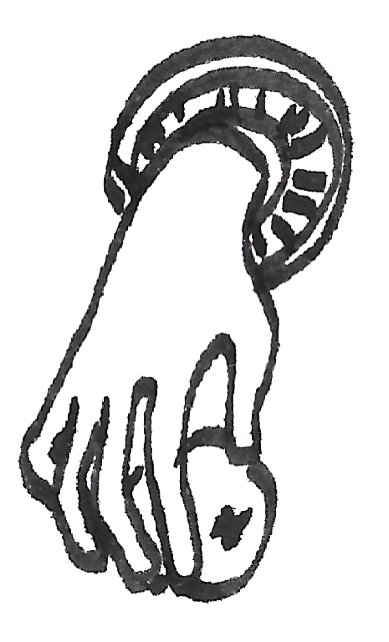
watched:
- The real story behind the Backrooms, Kendra Gaylord 🔗
- Alice Austen, the 1880s photographer: her house, her photos, her love life, Kendra Gaylord 🔗
- How to See an Exquisite Corpse | Surrealism at 100, The Museum of Modern Art 🔗
- Art, Scandal and Survival: The Scandalous Life of Tamara de Lempicka 🔗
- Grenfell, Steve McQueen
- Super Happy Forever, Kohei Igarashi
- The End, Joshua Oppenheimer
read:
- The Postmodern Condition: A Report on Knowledge, Jean-Francis Lyotard
- What about Postmodern? The concept of the Postmodern in the work of Lyotard, Niels Brügger
- Donna Dennis; re-imagining an American Vernacular, Jan Riley
- Wonder, the Rainbow, and the aesthetics of pure experiences, Philip Fisher
- Anderson’s Utopia, Partha Chatterjee
- Bound Transcendance and the Invisible: On Merleau-Ponty’s philosophy of painting, Véronique M. Foti
- Otakuology: A Dialogue, Patrick W. Galbraith and Thomas Lamarre
- Giving Voice to a Building: A Critical Analysis of Adolf Loos’s Landhaus Khuner, Eva Branscome
- On Paintings, Douglas Crimp
Three deaths, David Eagleman
‘There are three deaths. The first is when the body ceases to function. The second is when the body is consigned to the grave. The third is that moment, sometime in the future, when your name is spoken for the last time’
Dutch angle
‘(known as a Dutch tilt, canted angle, or oblique angle) a type of camera shot that has a noticeable tilt on the camera’s ‘x-axis.’ It’s a camera technique that was used by the German Expressionists in the 1920s — so it’s not actually Dutch. Directors often use a Dutch angle to signal to the viewer that something is wrong, disorienting, or unsettling’

february
veridis quo
read:
- Eric Rohmer's Oppressive Summers, John Fawell 🔗
- Kobby Adi: The Logic of the Shift, Stephanie Bailey
- A World That One Can Be Enveloped Into and Meditate Upon: Isaac Julien – Curatorial Leadership Summit, The Armory Show 2024, New York: Isaac Julien in conversation with Lauren Cornell
- The World’s Fair That Ignored More Than Half the World, Rachel B. Tiven 🔗
- The Trouble with Art Biennials Today, Joshua Segan-Lean 🔗
- Allegory vs Realism; Female vs Male Depictions 🔗
watched:
- Richard Ayoade on his writing style, creative processes and The Unfinished Harauld Hughes
- Lacan - Mirror Stage, Desire, Imaginary and Symbolic "I"
- Igby Goes Down
- We need to talk about the National Portrait Gallery.
- Gilles Deleuze & Félix Guattari's "A Thousand Plateaus"
- Hannah Quinlan and Rosie Hastings, Inside, Video

I am Martin Parr, Lee Shulman
‘Since the 1970s, English photographer Martin Parr has held up a sometimes tender, sometimes critical and always mischievous mirror to our times, forcing us to take a hard look at how consumer society has shaped our lives. Discover the maverick behind some of the most iconic images of the past century on an intimate and exclusive road trip across England with the uncompromising Parr, whose subjects, frames and colours have revolutionised contemporary photography’
![]()
january
2025
reading:
- The Lighted Window, Evening walks remembered, Peter Davidson
read:
- Everyday Camouflage in the City, Rafael Gomez-Moriana
- On the Natural History of Destruction’ and Cultural Memory, W.G. Sebald
- Conservation and Regeneration: Complementary or Conflicting Processes? The Case of Grainger Town, Newcastle Upon Tyne, John Pendlebury
- Wencun Village, China, by Wang Shu and Lu Wenyu’s Amateur Architecture Studio, Yiping Dong Today
- Dream Works, newly published translations of the work of two overlooked design prophets, Frieze
- ‘Erase the traces’: urban experiance in Walter Benjamin’s commentary on Brecht’s lyric poetry, Luciano Gatti
- Dasein, authenticity, and choice in Heidegger’s ‘Being and time’, Anna M. Rowan
- Adaptive Modernism and beyond: towards a poetics of new Scotland, Ullrich Kockel
- Pierre Bourdieu’s Toolbox: Fields, Power, Practices, and Habitus in the Analysis of Peacebuilding, Catherine Goetze
- John Grierson’s ‘First principles’ as origin and beginning: the emergence of the documentary tradition in the field of nonfiction film, Martin Stollery
- Adaptive modernism and beyond: Towards a poetics of a new Scotland, Ullrich Kockel
articles:
Frieze, October 2024:
- Ring Cycle, Daisy Lafarge on Tacita Dean’s 2003 work Crowhurst
- Interview: Jack O’Brien on queer erotics and the stories of surfaces
- The Excerpt: The Use of Photography, Annie Erneux
- Missive: A Ramble along the River Ravensbourne, Angela Lambo
documentaries:
- Joyce, Yeats and Wilde 🔗
- Willa Cather documentary 🔗
- Yours, Willa Cather 🔗
- WB Yeats 🔗
- Why England erased this Welsh village 🔗
- Sir Walter Scott documentary🔗
- Robert Louis Stevenson documentary 🔗
- 1972: The curious case of the blocked window, BBC Archive 🔗
- Electric Paris - Electricity at the Turn of the Century 🔗
- Sears Houses-- Kit Houses Sold by Sears, Roebuck, 1908-1940. From Two on Two, WBBM-TV Chicago 🔗
- Hannah Quinlan and Rosie Hastings, Inside, Video documentation, 2022, Kunsthalle Osnabrück 🔗
notes
![]()
![]()
![]()
![]()
‘In maritime law, flotsam, jetsam, lagan, and derelict are terms for various types of property lost or abandoned at sea’
‘Since the 1970s, English photographer Martin Parr has held up a sometimes tender, sometimes critical and always mischievous mirror to our times, forcing us to take a hard look at how consumer society has shaped our lives. Discover the maverick behind some of the most iconic images of the past century on an intimate and exclusive road trip across England with the uncompromising Parr, whose subjects, frames and colours have revolutionised contemporary photography’
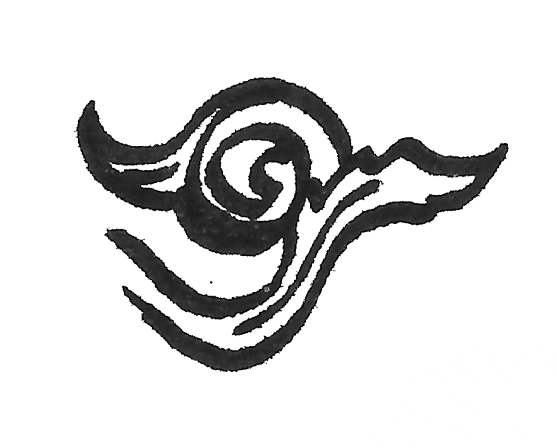
january
2025
reading:
- The Lighted Window, Evening walks remembered, Peter Davidson
read:
- Everyday Camouflage in the City, Rafael Gomez-Moriana
- On the Natural History of Destruction’ and Cultural Memory, W.G. Sebald
- Conservation and Regeneration: Complementary or Conflicting Processes? The Case of Grainger Town, Newcastle Upon Tyne, John Pendlebury
- Wencun Village, China, by Wang Shu and Lu Wenyu’s Amateur Architecture Studio, Yiping Dong Today
- Dream Works, newly published translations of the work of two overlooked design prophets, Frieze
- ‘Erase the traces’: urban experiance in Walter Benjamin’s commentary on Brecht’s lyric poetry, Luciano Gatti
- Dasein, authenticity, and choice in Heidegger’s ‘Being and time’, Anna M. Rowan
- Adaptive Modernism and beyond: towards a poetics of new Scotland, Ullrich Kockel
- Pierre Bourdieu’s Toolbox: Fields, Power, Practices, and Habitus in the Analysis of Peacebuilding, Catherine Goetze
- John Grierson’s ‘First principles’ as origin and beginning: the emergence of the documentary tradition in the field of nonfiction film, Martin Stollery
- Adaptive modernism and beyond: Towards a poetics of a new Scotland, Ullrich Kockel
articles:
Frieze, October 2024:
- Ring Cycle, Daisy Lafarge on Tacita Dean’s 2003 work Crowhurst
- Interview: Jack O’Brien on queer erotics and the stories of surfaces
- The Excerpt: The Use of Photography, Annie Erneux
- Missive: A Ramble along the River Ravensbourne, Angela Lambo
documentaries:
- Joyce, Yeats and Wilde 🔗
- Willa Cather documentary 🔗
- Yours, Willa Cather 🔗
- WB Yeats 🔗
- Why England erased this Welsh village 🔗
- Sir Walter Scott documentary🔗
- Robert Louis Stevenson documentary 🔗
- 1972: The curious case of the blocked window, BBC Archive 🔗
- Electric Paris - Electricity at the Turn of the Century 🔗
- Sears Houses-- Kit Houses Sold by Sears, Roebuck, 1908-1940. From Two on Two, WBBM-TV Chicago 🔗
- Hannah Quinlan and Rosie Hastings, Inside, Video documentation, 2022, Kunsthalle Osnabrück 🔗
notes
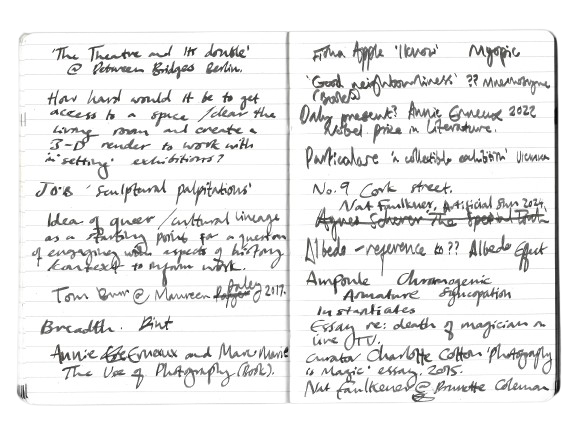



‘In maritime law, flotsam, jetsam, lagan, and derelict are terms for various types of property lost or abandoned at sea’

Lacan’s three principles;
The Imaginary- the world of immediate sensory perceptions
The Symbolic- based on language and gives meaning to everything around us
The Real- a deliberately ambiguous term that suggests both material reality and that which cannot be symbolized

‘The past is never dead. It's not even past"
William Faulkner, Requiem for a Nun






postcards collected at 69A 75 Renshaw St, Liverpool

‘Embroidery on polyester, Rafah Museum Collection, with thanks to its Director, Dr Suhaila Shaheen. This thobe, made for a little girl, was damaged in the targeted bombing of the Rafah Museum in Gaza, whose collections were largely destroyed by Israel in 2023. The force of an explosion threw the dress onto a roof, where it was inaccessible for 8 months until the museum's team could retrieve it. As well as the violence of the bombing, exposure to the elements has left its marks on the garment - the fabric has been weakened by the rain and bleached by the sun’
Thread Memory: Embroidery from Palestine, V&A Dundee


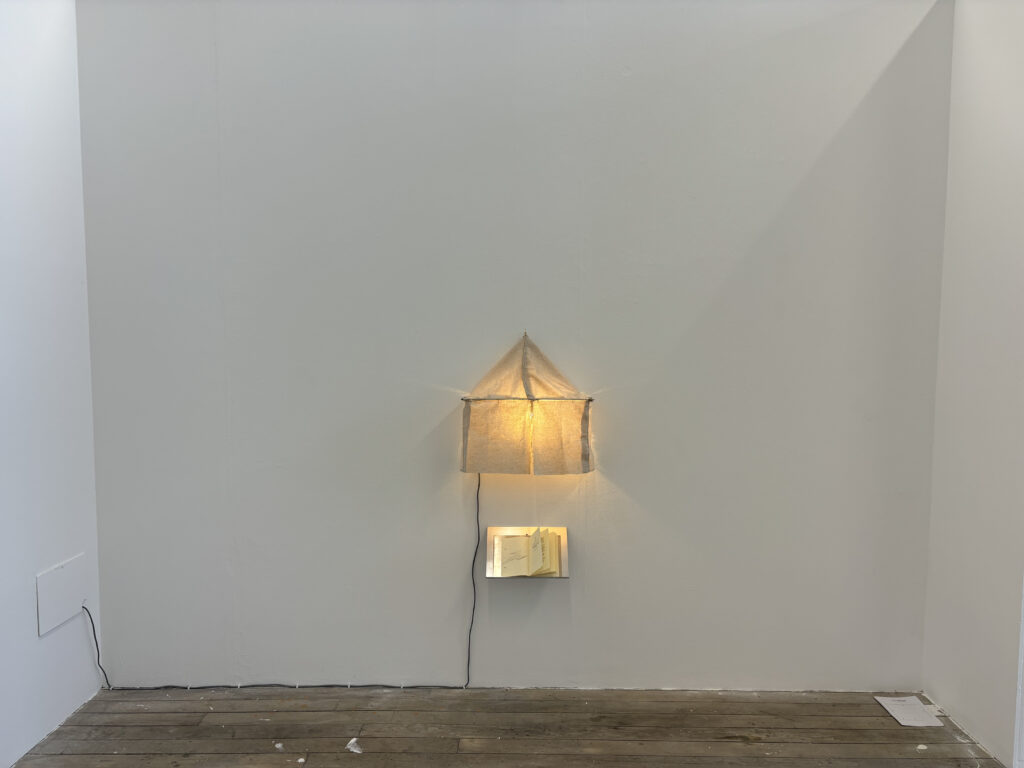






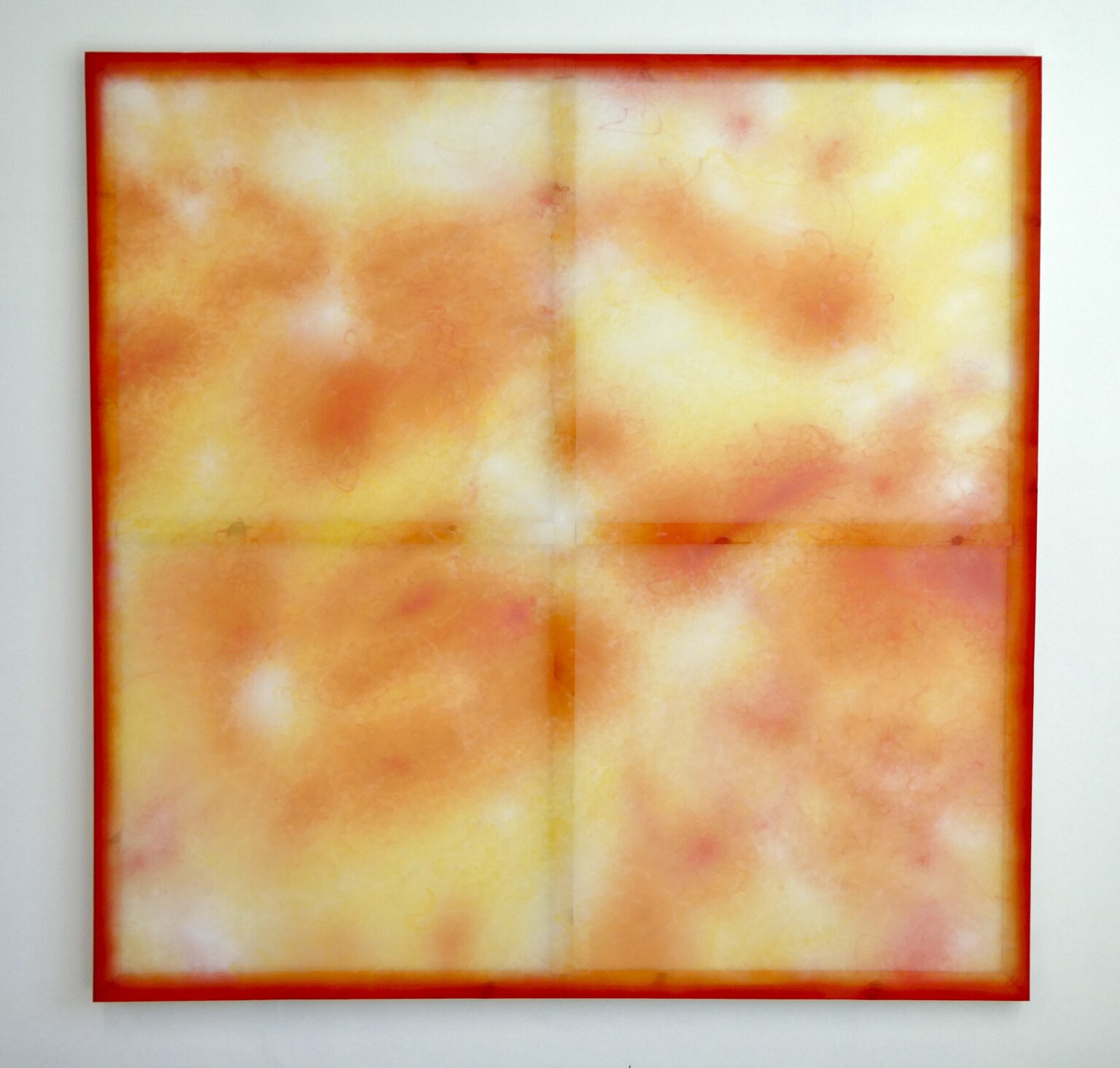
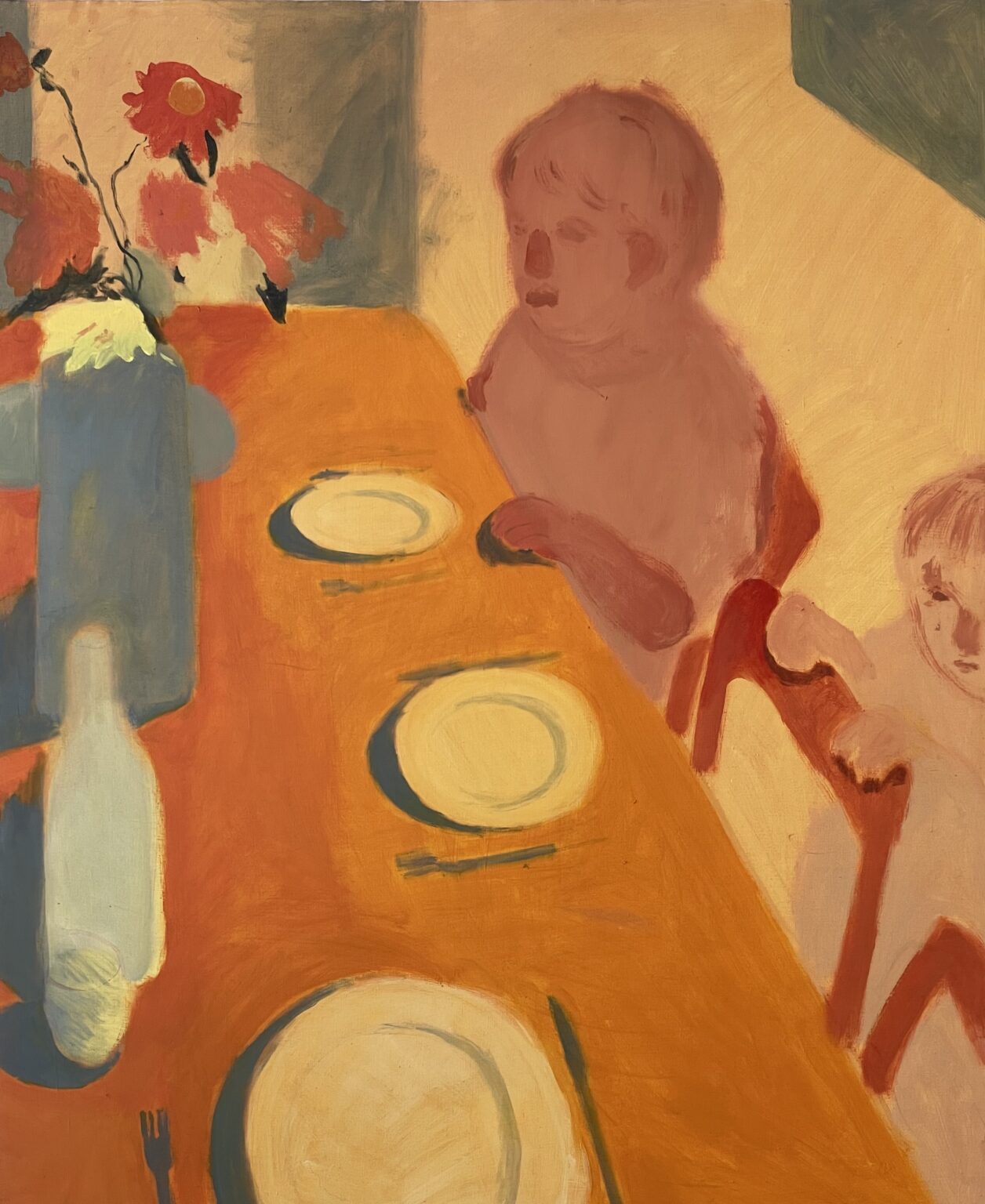


Send Back the Money
Frederick Douglass travelled to Glasgow on Saturday 10 January 1846, sailing from Belfast after an extensive tour of Ireland. He had been invited by William Smeal and John Murray, secretaries of the Glasgow Emancipation Societywho had been eagerly anticipating his arrival for some months. A ‘large and respectable’ audience gathered to hear the ‘self-liberated slave’ deliver his first public lecture at the City Hall the following week.
For the next three months Glasgow served as his main base from which he travelled north to Perth, Dundee and as far as Aberdeen; to Paisley and Ayr to the south; and west to Greenock and the Vale of Leven. 🔗
‘About suffering they were never wrong,
The Old Masters: how well they understood
Its human position; how it takes place
While someone else is eating or opening a window or just walking dully along
How, when the aged are reverently, passionately waiting
For the miraculous birth, there always must be
Children who did not specially want it to happen, skating
On a pond at the edge of the wood:
They never forgot
That even the dreadful martyrdom must run its course
Anyhow in a corner, some untidy spot
Where the dogs go on with their doggy life and the torturer's horse
Scratches its innocent behind on a tree.
In Brueghel's Icarus, for instance: how everything turns away
Quite leisurely from the disaster; the ploughman may
Have heard the splash, the forsaken cry,
But for him it was not an important failure; the sun shone
As it had to on the white legs disappearing into the green
Water; and the expensive delicate ship that must have seen
Something amazing, a boy falling out of the sky,
Had somewhere to get to and sailed calmly on.’
Musée des Beaux Arts, W.H. Auden
Living Treasures of Japan (1981)

Arte Útil
Whether through self-organised groups, individual initiatives or the rise of user generated content people are developing new methods and social formations to deal with issues that were once the domain of the state. Arte Útil case studies show how these initiatives are not isolated incidents, but part of a larger historical trajectory that is now shaping our contemporary world.
The notion of what constitutes Arte Útil has been arrived at via a set of criteria that was formulated by Tania Bruguera and curators at the Queens Museum, New York, Van Abbemuseum, Eindhoven and Grizedale Arts, Coniston. 🔗
Arte Útil projects should:
1) Propose new uses for art within society
2) Use artistic thinking to challenge the field within which it operates
3) Respond to current urgencies
4) Operate on a 1:1 scale
5) Replace authors with initiators and spectators with users
6) Have practical, beneficial outcomes for its users
7) Pursue sustainability
8) Re-establish aesthetics as a system of transformation
![]()
![]()
The Klein Studio, Peter Wormersley, Selkirk 🔗
Satre, en-soi and pour-soi
‘En-soi refers to all those things that are fixed, passive, and defined. Most often, they are the objects we encounter in the world. Pour-soi, though, is our dynamic, personal experience. It’s our awareness directed outward at the world. It’s the “me” that’s doing things and “being.” It’s you, right now, wherever you are, looking out at things.
For Sartre, The Look (sometimes translated as Gaze) is when “The Other” forces us to see ourselves not as pour-soi but en-soi. It is when we, the subject of our life, are made into an object or some background prop. When someone Looks at us, we’re forced to see ourselves as if from outside. As Sartre wrote, “I see myself because somebody sees me.”
![]()
‘Home, James”
‘The full phrase, “Home James and don't spare the horses” dates from about 1870 or earlier. Most stories attributed the phrase to have been uttered by Queen Victoria who had a driver named James Darling. The phrase became widely recognized thanks to the 1934 British song performed by Elsie Carlisle with Burt Ambrose and his orchestra. The lyrics describe a bad date and a woman wanting to get home quickly’
![Janet Burnside and Tiyo Soga, Jessie Soga's parents]()
![Janet Burnside and Tiyo Soga]()
Jessie Soga
In 1908, Soga was one of the "prime movers", according to suffrage campaign leader Teresa Billington-Greig, in creating a large new Women's Freedom League branch in the prosperous West End of Glasgow (Hillhead). The public launch meeting at the Hillhead Burgh Hall greatly exceeded expectations, as the numbers overflowed the main hall and a second room, with a large membership as a result. Soga and E.S. Semple were appointed joint branch secretary in February 1908 and hosted an "At Home" event in the same halls in April, with Margaret Irwin (trade unionist) as keynote speaker.
(Soga was described as a "new contralto" when she performed with other soloists in a Glasgow City Hall concert on 16 November 1895)
Roland Barthes
Text of Pleasure, Text of Bliss
Text of Pleasure - a comfortable text that situates the reader securely in the established culture.
Text of Bliss - a text that discomforts, unsettles the readers historical, cultural, psychological assumptions
Studium and Punctum
‘Investigating the impact of photography on the observer, he distinguished two themes: the studium and the punctum. The studium is the social and cultural interpretation of the photograph and the punctum is a specific detail which provokes a deep and personal reaction to the image’
Whether through self-organised groups, individual initiatives or the rise of user generated content people are developing new methods and social formations to deal with issues that were once the domain of the state. Arte Útil case studies show how these initiatives are not isolated incidents, but part of a larger historical trajectory that is now shaping our contemporary world.
The notion of what constitutes Arte Útil has been arrived at via a set of criteria that was formulated by Tania Bruguera and curators at the Queens Museum, New York, Van Abbemuseum, Eindhoven and Grizedale Arts, Coniston. 🔗
Arte Útil projects should:
1) Propose new uses for art within society
2) Use artistic thinking to challenge the field within which it operates
3) Respond to current urgencies
4) Operate on a 1:1 scale
5) Replace authors with initiators and spectators with users
6) Have practical, beneficial outcomes for its users
7) Pursue sustainability
8) Re-establish aesthetics as a system of transformation


The Klein Studio, Peter Wormersley, Selkirk 🔗
Satre, en-soi and pour-soi
‘En-soi refers to all those things that are fixed, passive, and defined. Most often, they are the objects we encounter in the world. Pour-soi, though, is our dynamic, personal experience. It’s our awareness directed outward at the world. It’s the “me” that’s doing things and “being.” It’s you, right now, wherever you are, looking out at things.
For Sartre, The Look (sometimes translated as Gaze) is when “The Other” forces us to see ourselves not as pour-soi but en-soi. It is when we, the subject of our life, are made into an object or some background prop. When someone Looks at us, we’re forced to see ourselves as if from outside. As Sartre wrote, “I see myself because somebody sees me.”

‘Home, James”
‘The full phrase, “Home James and don't spare the horses” dates from about 1870 or earlier. Most stories attributed the phrase to have been uttered by Queen Victoria who had a driver named James Darling. The phrase became widely recognized thanks to the 1934 British song performed by Elsie Carlisle with Burt Ambrose and his orchestra. The lyrics describe a bad date and a woman wanting to get home quickly’


Jessie Soga
In 1908, Soga was one of the "prime movers", according to suffrage campaign leader Teresa Billington-Greig, in creating a large new Women's Freedom League branch in the prosperous West End of Glasgow (Hillhead). The public launch meeting at the Hillhead Burgh Hall greatly exceeded expectations, as the numbers overflowed the main hall and a second room, with a large membership as a result. Soga and E.S. Semple were appointed joint branch secretary in February 1908 and hosted an "At Home" event in the same halls in April, with Margaret Irwin (trade unionist) as keynote speaker.
(Soga was described as a "new contralto" when she performed with other soloists in a Glasgow City Hall concert on 16 November 1895)
Roland Barthes
Text of Pleasure, Text of Bliss
Text of Pleasure - a comfortable text that situates the reader securely in the established culture.
Text of Bliss - a text that discomforts, unsettles the readers historical, cultural, psychological assumptions
Studium and Punctum
‘Investigating the impact of photography on the observer, he distinguished two themes: the studium and the punctum. The studium is the social and cultural interpretation of the photograph and the punctum is a specific detail which provokes a deep and personal reaction to the image’
Rose Schneiderman
‘Rose Schneiderman (a Jewish Polish immigrant in America, she was also a lesbian, she never had children, she was one of the first women to organise the Labour movement in America) was speaking (on April 2, 1911 at a meeting at New York's Metropolitan Opera House) in the aftermath of the Triangle Shirtwaist Factory fire — one of the deadliest industrial disasters in U.S. history which killed 146 workers — 123 of whom were women aged between 14 and 23. "What the woman who labours wants is the right to live, not simply exist — the right to life as the rich woman has the right to life, and the sun and music and art," Schneiderman said, addressing a crowd of mostly privileged women. "You have nothing that the humblest worker has not a right to have also. The worker must have bread, but she must have roses, too. Help, you women of privilege, give her the ballot to fight with.”’
Secret Mall Apartment‘Two decades ago, eight artists set up camp in an off-map crawl space in the local mall. The group somehow outfitted the undeveloped corner of the colossal (and in-use) structure with the trappings of a home, from a dining table and secondhand couch to a TV set. Sneaking in through pitch-black service shafts, they made the forgotten concrete back room into a covert apartment, going as far as installing a door and running electricity, until they were busted in 2007. Two of the occupants, Adriana Valdez Young and Michael Townsend—then married, recent college grads—say that at first, they were simply curious if they could spend an entire day in the hidden section of the busy shopping mall. It spiraled into their group of eight hanging out in the unit on and off over the next four years, filming their escapades and planning art projects’


generation upon
generation upon
generation upon
generation upon
generation upon
generation upon
generation upon
generation upon
generation upon
generation upon
generation upon
generation upon
generation upon
generation upon
generation upon
generation upon
generation upon
generation upon
generation upon
generation upon
g neration up n
g nerat on up n
g nerat n up n
g nerat n p n
g erat n p n
g era n p n
g era n n
g er n n
g r n n
g n n
g n
g
Edwin Morgan, Archive
Conversation with Nathan Coley at The Common Guild, 24th April
Diet coke stand (transactional versus non-linear pursuits), Martin Boyce conversation around the voice of doubt and holding fast (past postcard interaction)

‘April is the cruelest month, breeding
lilacs out of the dead land, mixing
memory and desire, stirring
dull roots with spring rain.
Winter kept us warm, covering
Earth in forgetful snow, feeding
A little life with dried tubers.’
T.S Elliot, The Waste Land
Emil Tabakov, Motivity
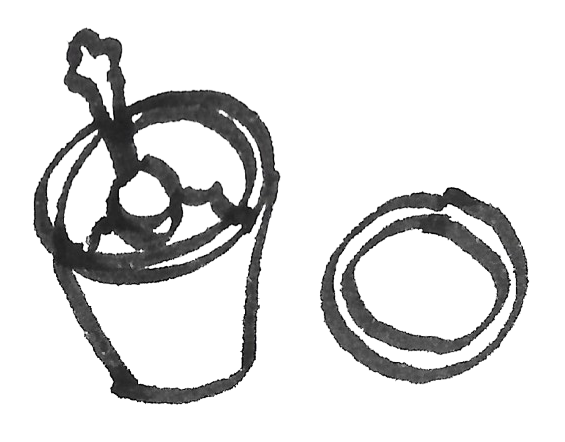
“Writing transforms the things seen or heard 'into tissue and blood'” (in vires et in sanguinem)
Foucault

Retrospective causality
In psychoanalytic theory, Freud's concept of "retrospective causality" or "Nachträglichkeit" (meaning "afterwards-ness") suggests that the present can influence our understanding and interpretation of the past, rather than the past solely determining the present.

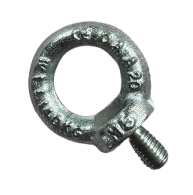


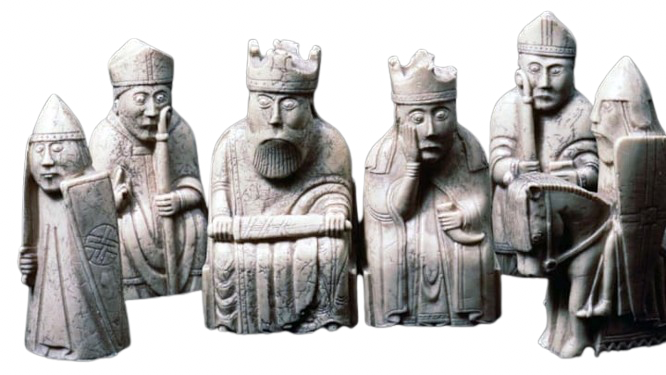
Lewis Chessmen
‘In 1831 Malcolm MacLeod (Calum an Sprot) was tending cattle on the rich farming land of Ardroil on the west coast of Lewis, when one of his animals wondered out onto the sands of Uig Bay. As he followed the cow onto the beach to retrieve it, Malcolm noticed a small stone chamber. In the chamber was a wooden box. And in the box were 78 elaborately carved chess pieces (along with 14 other gaming pieces and a belt buckle). The treasure Malcolm uncovered, carved from walrus ivory and whale teeth, may well have been in its hiding place for over 500 years, having been carved most likely in Trondheim in Norway sometime in the 12th century’
‘In 1831 Malcolm MacLeod (Calum an Sprot) was tending cattle on the rich farming land of Ardroil on the west coast of Lewis, when one of his animals wondered out onto the sands of Uig Bay. As he followed the cow onto the beach to retrieve it, Malcolm noticed a small stone chamber. In the chamber was a wooden box. And in the box were 78 elaborately carved chess pieces (along with 14 other gaming pieces and a belt buckle). The treasure Malcolm uncovered, carved from walrus ivory and whale teeth, may well have been in its hiding place for over 500 years, having been carved most likely in Trondheim in Norway sometime in the 12th century’

Callendar House
‘Callendar House is a mansion set within the grounds of Callendar Park in Falkirk, central Scotland. During the 19th century, it was redesigned and extended in the style of a French Renaissance château fused with elements of Scottish baronial architecture’
The Antonine Wall
(Vallum Antonini) was a turf fortification on stone foundations, built by the Romans across what is now the Central Belt of Scotland, between the Firth of Clyde and the Firth of Forth. Built some twenty years after Hadrian's Wall to the south, and intended to supersede it, while it was garrisoned it was the northernmost frontier barrier of the Roman Empire
‘Callendar House is a mansion set within the grounds of Callendar Park in Falkirk, central Scotland. During the 19th century, it was redesigned and extended in the style of a French Renaissance château fused with elements of Scottish baronial architecture’
The Antonine Wall
(Vallum Antonini) was a turf fortification on stone foundations, built by the Romans across what is now the Central Belt of Scotland, between the Firth of Clyde and the Firth of Forth. Built some twenty years after Hadrian's Wall to the south, and intended to supersede it, while it was garrisoned it was the northernmost frontier barrier of the Roman Empire
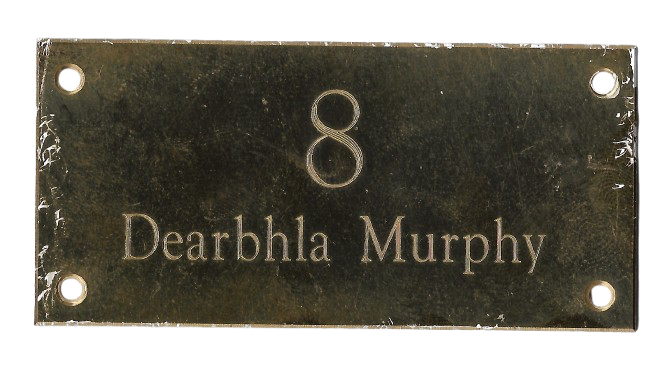

The Use of Photography, Annie Ernaux and Marc Marie
‘Lined up next to each other, these snapshots are like a diary to me. A diary of 2003. Love and death. The decision to exhibit them, make a book of them, is to put the seal on a part of our history.
I don't know what these photos are. I know what they embody, but I don't know what they're for.know what they are not: images in frames on a mantel-piece, next to a father, chubby babies and a great-uncle in uniform’
‘Lined up next to each other, these snapshots are like a diary to me. A diary of 2003. Love and death. The decision to exhibit them, make a book of them, is to put the seal on a part of our history.
I don't know what these photos are. I know what they embody, but I don't know what they're for.know what they are not: images in frames on a mantel-piece, next to a father, chubby babies and a great-uncle in uniform’
Sears’ houses
‘Sears, Roebuck & Co., based in Chicago, sold "mail order houses" from 1908-1940. In this story, the "Two on Two" news magazine visits the Sears archives to learn more about these unique homes...and also goes on a "house tour" to some of the Sears homes in the Chicago area. Produced in the 1980s, WBBM-TV’
‘Sears, Roebuck & Co., based in Chicago, sold "mail order houses" from 1908-1940. In this story, the "Two on Two" news magazine visits the Sears archives to learn more about these unique homes...and also goes on a "house tour" to some of the Sears homes in the Chicago area. Produced in the 1980s, WBBM-TV’
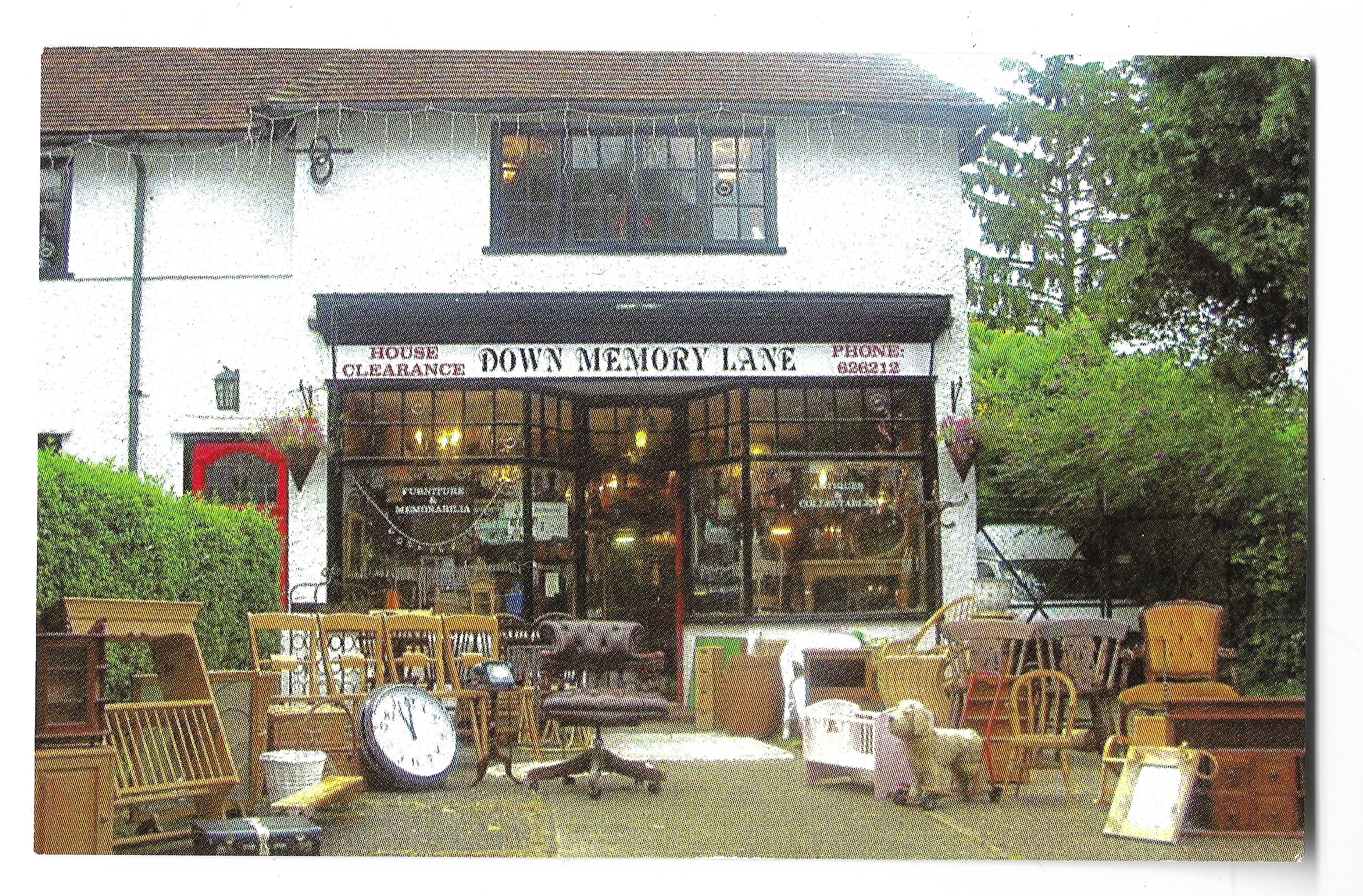

God knows where I am
‘The body of a homeless woman is found in an abandoned New Hampshire farmhouse. Beside the body, lies a diary that documents a journey of starvation and the loss of sanity, but told with poignance, beauty, humor, and spirituality. For nearly four months, Linda Bishop, a prisoner of her own mind, survived on apples and rain water, waiting for God to save her, during one of the coldest winters on record. As her story unfolds from different perspectives, including her own, we learn about our systemic failure to protect those who cannot protect themselves’

